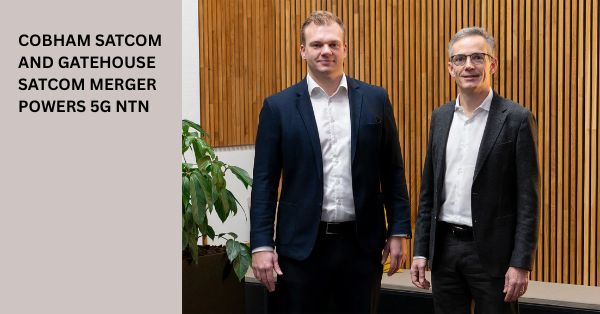6G photonic full‑spectrum chip achieves 100 Gbps
A research team in China and Hong Kong has demonstrated a thumbnail-sized 6G transceiver chip that spans nine radio bands from 0.5 to roughly 110 GHz and achieved triple‑digit Gbps data rates in the lab.
Key announcement: all‑frequency 6G prototype
Scientists led by Peking University and City University of Hong Kong reported an “all-frequency” 6G prototype fabricated on thin‑film lithium niobate (TFLN), integrating functions that today require multiple RF front‑ends into a single 1.7 x 11 mm die. The device covers sub‑6 GHz, microwave, mmWave, and sub‑THz bands and demonstrated over 100 Gbps throughput under controlled conditions. The work, published in Nature, positions a single, reconfigurable radio to operate across nine RF bands that typically would be serviced by discrete systems.
Dual electro‑photonic architecture explained
The design uses a dual electro‑photonic architecture. A broadband electro‑optic modulator converts RF to optical signals, which feed tunable optoelectronic oscillators generating low‑phase‑noise carriers from microwave up to sub‑THz. Reported agility includes multi‑GHz tuning in sub‑millisecond timeframes (on the order of 180 microseconds), enabling fast band switching and “adaptive spectrum management.” TFLN is the enabler: compared to conventional lithium niobate, it delivers high modulation efficiency, low loss, and compact photonic integration that suits wideband, low‑latency telecom hardware.
Why a full‑spectrum 6G RF front‑end matters
6G ambitions—ultra‑high throughput, microsecond‑class latency, and AI‑native orchestration—assume radios can flex across heterogeneous spectrum. A single, full‑spectrum, software‑reconfigurable RF front‑end could simplify devices, shrink SWaP (size, weight, and power), and reduce the bill of materials versus multi‑module designs. It also aligns with IMT‑2030 thinking and 3GPP’s early 6G study items that anticipate simultaneous use of sub‑6 for coverage and mmWave/sub‑THz for extreme capacity and sensing.
Interpreting the 100 Gbps lab result
The 100 Gbps lab result showcases component capability—not real‑world user speeds. Triple‑digit Gbps requires very wide contiguous channels, high‑order modulation, favorable propagation, and clean RF conditions typically found at mmWave/sub‑THz, not in rural low bands. The practical takeaway: the chip spans low to high bands so devices and networks can dynamically place traffic on the best spectrum “lane,” not that low bands will suddenly deliver 100 Gbps to handsets.
6G commercialization challenges from lab to network
The prototype compresses a rack of gear into a chip, but integrating it into phones, small cells, and radio units at carrier scale will test the limits of RF, optics, packaging, and policy.
RF, packaging, and thermal constraints
Even with an integrated transceiver, real systems still need band‑specific PAs, LNAs, filters, antenna arrays, and thermal solutions. Sub‑THz links demand dense phased arrays, tight phase coherence, linearity, and strict EVM/ACLR performance under high PAPR waveforms. Co‑packaging photonics with RF silicon, managing heat, minimizing spurs and phase noise, and meeting emissions masks across 0.5–110+ GHz are nontrivial. Power budget remains the gating factor for handsets and battery‑powered CPE.
Spectrum roadmap and regulatory hurdles
Commercial 6G depends on harmonized spectrum. Sub‑6 GHz refarming will continue, but multi‑gigahertz channels live in upper mmWave and sub‑THz bands that are still under study in many regions. National regulators (e.g., FCC, CEPT, MIIT) and ITU‑R processes will determine what above‑100 GHz becomes licensed IMT versus unlicensed/shared, and what coexistence constraints apply with incumbents. The value of an all‑band chip rises if dynamic spectrum access and automated coordination are standardized.
Network bottlenecks: RAN, transport, compute
Radio agility pushes complexity into the network. Multi‑band scheduling, carrier aggregation across disparate bands, and AI‑driven RIC policies will be required to place flows on the optimal spectrum in real time. Backhaul/fronthaul must keep pace—100 Gbps at the air interface implies 100G/400G transport per sector, tight time sync, and upgraded DU/CU compute with hardware acceleration. Edge sites will need more power and cooling; energy efficiency remains a board‑level KPI.
Device readiness and ecosystem maturity
Handset and CPE vendors would need new antenna modules, materials, and thermal designs for 90–140 GHz and beyond. Component supply chains for TFLN photonics, high‑frequency PAs, and advanced packaging are early‑stage. Interoperability through 3GPP, O‑RAN Alliance, and ETSI ISGs (e.g., RIS, MEC) will determine how quickly multi‑vendor ecosystems can adopt electro‑photonic radios.
6G strategy: actions for operators, vendors, and governments
Telecom leaders can use this milestone to recalibrate 6G roadmaps, balancing opportunity with pragmatic steps that de‑risk adoption.
Operator playbook and trials
– Start multi‑band field trials that pair wideband E/W‑band links with sub‑6 anchor coverage to validate dynamic spectrum placement under mobility and load.
– Upgrade transport plans to 100G/400G per cell site, including timing (IEEE 1588v2/SyncE) and Class C/D sync for sub‑THz beamforming.
– Expand AI‑native RAN pilots: deploy near‑RT RIC xApps/rApps for spectrum agility, interference mitigation, and energy savings across mixed bands.
– Engage regulators early on 90–140 GHz trial licenses, coexistence studies, and power limits that make outdoor small‑cell deployments viable.
Vendor and silicon maker priorities
– Prioritize electro‑photonic RF front‑ends on TFLN and explore co‑packaged optics with RFICs to reduce loss and improve phase noise.
– Publish reference designs for hybrid beamforming arrays at 70/90/140 GHz with clear EVM, ACPR, and thermal performance across temperature corners.
– Build test harnesses for sub‑millisecond band switching, including KPI impacts on HARQ, CSI acquisition, and multi‑band carrier aggregation.
– Contribute to 3GPP Rel‑21/22 study items on sub‑THz channel models, waveform candidates, and sensing integration to align silicon with standards.
Enterprise and government adoption paths
– Pilot private networks that blend licensed sub‑6 with unlicensed mmWave for high‑throughput use cases in campuses, ports, and factories.
– Invest in edge compute and deterministic networking where 6G’s low latency and sensing could enable digital twins, machine vision, and robotics.
– Fund supply‑chain resilience for photonics, advanced packaging, and high‑frequency materials to avoid bottlenecks at commercialization.
2027–2030 milestones to watch
– Standardization: IMT‑2030 performance targets and 3GPP’s first 6G releases, including sub‑THz bands, positioning/sensing, and AI‑native RAN features.
– Spectrum policy: regional openings above 100 GHz and new frameworks for dynamic/shared access that reward band agility.
– Ecosystem proofs: multi‑vendor demos combining full‑spectrum radios with O‑RAN orchestration, showing stable performance in dense environments.
– Energy metrics: credible Joules/bit improvements from electro‑photonic radios compared to CMOS‑only chains, especially at cell edge.
The bottom line: a compact, full‑spectrum 6G chip is a genuine breakthrough, but commercial advantage will accrue to players who marry this silicon with spectrum strategy, transport capacity, AI‑driven RAN control, and disciplined engineering of the RF, optics, and thermal stack.








































